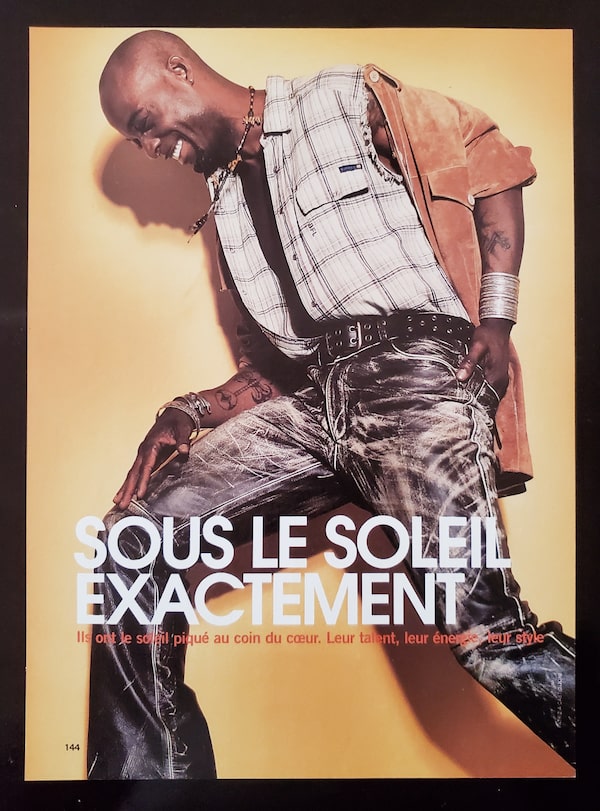At the end of each school year, Charmaine Gooden asks her fashion journalism students for comments on the course. And the feedback that always sticks out the most is when her Black students tell her that she was their motivation.

Fashion journalism professor Charmaine Gooden pays attention to the feedback she receives from Black students at Toronto Metropolitan University.Supplied
“I would consistently get, ‘Because I saw you, I went further,’” says the professor, who teaches at the Toronto Metropolitan University (formerly known as Ryerson). “And I thought to myself, I have to show you more. I need you to receive more frames of reference.”
Born and raised in Jamaica, Gooden knows all too well what it’s like for young Black people who don’t see fashion as a world they belong in. At the time when she was deciding what path her life would take, there weren’t many successful Black models, photographers and other fashion creatives being highlighted in mainstream media.
“I did not really start off thinking I would ever achieve this career,” she says.
So, armed with the feedback from her students and galvanized by the renewed conversations about anti-Blackness after George Floyd’s murder, Gooden approached her journalism students at TMU in the fall of 2021 to see whether they’d be interested in helping create what is now the Black Fashion Canada Database.
Her mission is simple: to document the stories of pioneering yet unrecognized Black models, muses, designers, photographers and other talent working in the fashion world from the 1960s through to the 1990s, “so young people see that there are others who have gone before” she says.
Launched this week, blackfashioncanada.ca hosts a profile of each individual, breaking down their early life and career and how they broke barriers in the fashion world. Gooden and her team have prepared stories on legendary Black models, actors and performers from across Canada, including Hondo Flemming, Linda Carter, Denise McLeod and Ethne Grimes de Viennes, many of whom are alive and agreed to be interviewed for the series.

Linda Carter is one of the Canadian fashion personalities being celebrated with Met U's new Black Fashion Canada Database.Hans Lichtenberg/Supplied
Gooden – herself a force in the industry who spent her early years working in fashion journalism and PR at institutions such as Holt Renfrew and Chatelaine magazine – got the ball rolling by reaching out to possible subjects on Facebook.
“I started where I could with people that I knew,” she says. “Right now the list is primarily fashion models … designers and creatives. But as we go into the second round, I’m going to try and really focus more on the entrepreneurs – the vintage store owners, the beauty salons, the dress makers, people like that.”
Gooden connected her subjects to the students who would be interviewing them. For Darya Soufian, this was an opportunity to learn about the people who have helped shape the fashion world, but who aren’t often thought of as pioneers. Her profile of Flemming, a Montreal-based former model and actor, traces his rise through the fashion world from Quebec to Europe.
“I think he knew that he had some sort of influence, but I don’t think he knew the impact that he had on the industry today, which I think was a big thing about this project,” she says. “Really highlighting the impact that these individuals have on the industry then and now even if they’re not still working in it.”
Another call went out to Barbados-born hairstylist Adrian Carew. Based in Toronto, Carew has been doing hair in the city since the 1990s. And while he has won multiple Canadian titles, been featured in publications such as Vogue Italy and worked fashion shows by Marc Jacob and Chanel, Carew knows that the fashion landscape can be a fraught and toxic place for people who look like him.
“When you don’t see that you’re acknowledged, you feel kind of left out,” he says. “You feel as though, why me? I know I’m really good, let me be seen for my talent, and be recognized for my talent.”

Canadian model Hondo Flemming.Supplied
Carew is also working to make the fashion space more inclusive and welcoming for Black talent. For the past two seasons, he’s been working with Camera Nazionale della Moda Italiana (an Italian fashion non-profit) and Show Division (which produces fashion shows around the world) to teach hair stylists in Milan how to properly style Black hair – a skill that is a rarity in the white-dominated business. “We teach a whole bunch of stylists how to work with Black hair, and the importance of it, and how to manipulate it correctly,” he explains.
For Carew, being recognized alongside some of the biggest names in fashion – many of whom he looked up to – is an honour. But for Gooden, the database isn’t just about recognizable personalities. “There are a lot of very famous people who have a loud voice and a loud social media presence. I honour them, they deserve it, but I wanted to unearth some of the lesser known players,” she says.
And after decades in an industry that has long kept people like her out, creating something meaningful for her community is her No. 1 priority. “I get joy and pleasure from lifting up worthy people,” she says. “I really do.”
Sign up for The Globe’s arts and lifestyle newsletters for more news, columns and advice in your inbox.